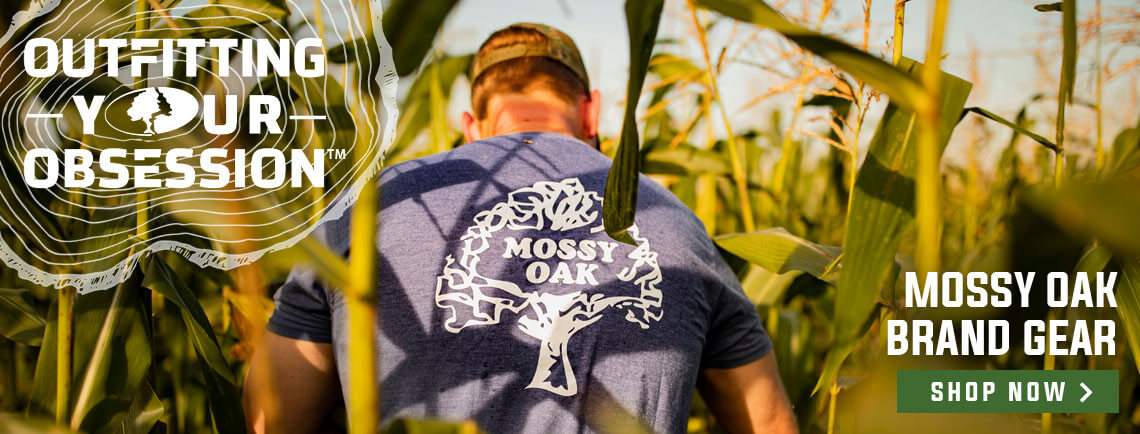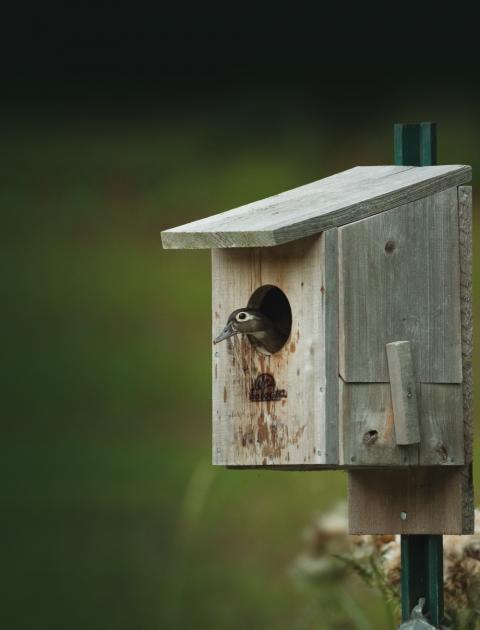By Jason Herbert
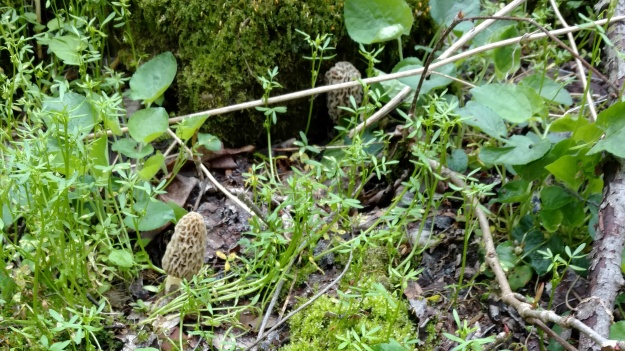
I am by no means an expert at mushroom hunting (or “mushroom looking” as my youngest son says), but I have learned a few things along the way and seem to have pretty consistent luck. I don't know what I enjoy more — eating the delicious morels after a long day of looking or spending time in the woods with my family and watching how much fun the kids have just finding them. Either way, here are some steadfast rules that good mushroom hunters and I try to stick to when mushroom hunting.
Gear You Need For Morel Mushroom Hunting
Mushroom hunting — or anything in the outdoors — is supposed to be fun. I use specific gear when I mushroom hunt, for several reasons. First on the list is personal protection. I really like the Bug Blocker sprays. First, the night before we go, I will pre-treat all of our clothes with Bug Blocker for Ticks. With all of the nasty diseases ticks carry around, the last thing I need to deal with is one of them biting my kids. I also constantly carry a bottle of Bug Blocker mosquito spray for obvious reasons. One quick dose of this aerosol spray will keep us all safe from mosquitoes for an entire mushroom trip.
I tend to hunt wild mushrooms on properties shared by other mushroom hunters. Sometimes I get there first, but usually, I don't and am left picking the ones nobody else can seem to get to. All this foot traffic leaves me to beat through the brush that others passed by. Mushroom hunters who search out public land can be rough on clothes. That’s why I love to wear my durable gear while hunting morel mushrooms.
I also like nature-colored or camo gear for their ability to help me stay hidden. Probably my best mushroom spot is right next to a very popular stretch of road. I know it sounds crazy, but I like to keep a low profile when mushroom hunting in the early spring. All the while, oblivious passersby have no idea what little gems are hidden right there, feet away from a public sidewalk. Pants and long sleeves also protect me from poison ivy, which seems to like to grow near mushrooms. And like I said, I often get the leftovers, so I can’t be afraid of poison ivy patches either.
Finding morels can be fun with the family. Everyone should be careful when reaching in and around logs and tree trunks. The warm weather brings out wild mushrooms, but snakes are stirring, too. Copperheads frequent the same areas that mushrooms thrive in. Cautious mushroom hunters stay alert and have little to worry about. Bring a couple of buckets or onion sacks and a knife and you should be good to go.
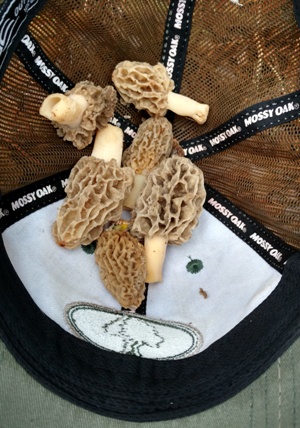
When Do Morels Bloom?
The first hunting tip to understand when morel mushroom hunting is how dependent they are on good weather. The first mushrooms to show each spring are the black morels. Start to look for blacks at the end of April or beginning of May, after at least seven straight days of above-freezing temperatures. Ideally, a couple of days with some rain and 50-degree temperatures at night are perfect to get things fired up. If there are six straight days of no freezing, and then it freezes on the seventh day, the cycle starts over. It's really very important that the soil temperature is right or the mushrooms won't pop up. A good indicator of proper soil temperature is dandelions. As pesky as those things are, they can be a mushroom hunter's best friend. When the dandelions are blooming, get ready. When they start going to seed, start looking for wild mushrooms.
False morels will typically bloom a few weeks before true morels. The exact timing depends on the area of the country you're in and the weather. A false morel resembles true morels, but in some cases can make you sick or worse. It pays to do a little research before you go mushroom hunting since it can help you avoid a bad stomach ache later. Seasoned mushroom hunters have no problem finding true morels and a trip with them can teach you a lot.
MOREL RECIPE: ELK MEDALLIONS WITH WILD MOREL CREAM SAUCE
Where to Look for Morels
One of the most frequent hunting tips asked for is: Where do you look for true morels? You can find them on private or public land. I always begin looking for mushrooms near dying trees such as elms, ash, apple and generally any softwoods. Ash is the exception to the rule, but for the most part, mushrooms feed off decaying root material of softwood trees. The best advice is to find dying trees that haven't quite shed their bark yet. Start by looking on the southern edge of these trees because that is where the soil will be the warmest from the most direct sunlight exposure. Too much heat isn't good for finding morels either, so make sure to always make a complete circle around the tree when looking, and don't neglect the little nooks and crannies. For instance, areas under logs might grow some giant mushrooms where they can remain moist and still maintain a proper soil temperature. Once mushrooms are located on the southern side of the tree, they will continue to grow around the entire tree throughout the season as soil temperatures change, so be sure to come back and keep looking. Generally, the black morels show up first followed by the “half frees” and then the grays followed by yellows or whites. And, lastly, the giants. Black morels tend to grow rather sporadically whereas the others might grow in clumps. Many times people don't even find blacks because they start looking too late.
Another area where mushroom hunters search for morels are burn areas. Often public lands like national parks, state parks and even national forests will conduct controlled burns. These burn areas often produce bumper crops for mushroom hunters. It seems the crisper the burn area, the better. Even an out-of-control forest fire can result in wild mushrooms growing in the burn area. Often, the morel mushroom is the first sign of life after a forest fire or controlled burn.
When the first wild mushroom is located, everyone gathers around to thoroughly look it over. I find that the first one is often hardest to find. Once we see that first one, our eyes become acclimated to them again and the rest seem to pop up out of nowhere. We cut or pinch the mushrooms, careful to not bring any more dirt in the sack than we need to. I have heard if the mushroom is cut delicately enough, the organism below the soil may produce more fruit. Each kid gets their own plastic mesh onion sack to collect their mushrooms and when a kid finds one, we all really celebrate. If the kids are having a hard time finding morels, I'll find a few and call them over. I don't tell them that I located any, but rather just tell them to start looking close in the new area. Usually they pick right up on them, and they get added to that child's bag if there's a friendly competition going.
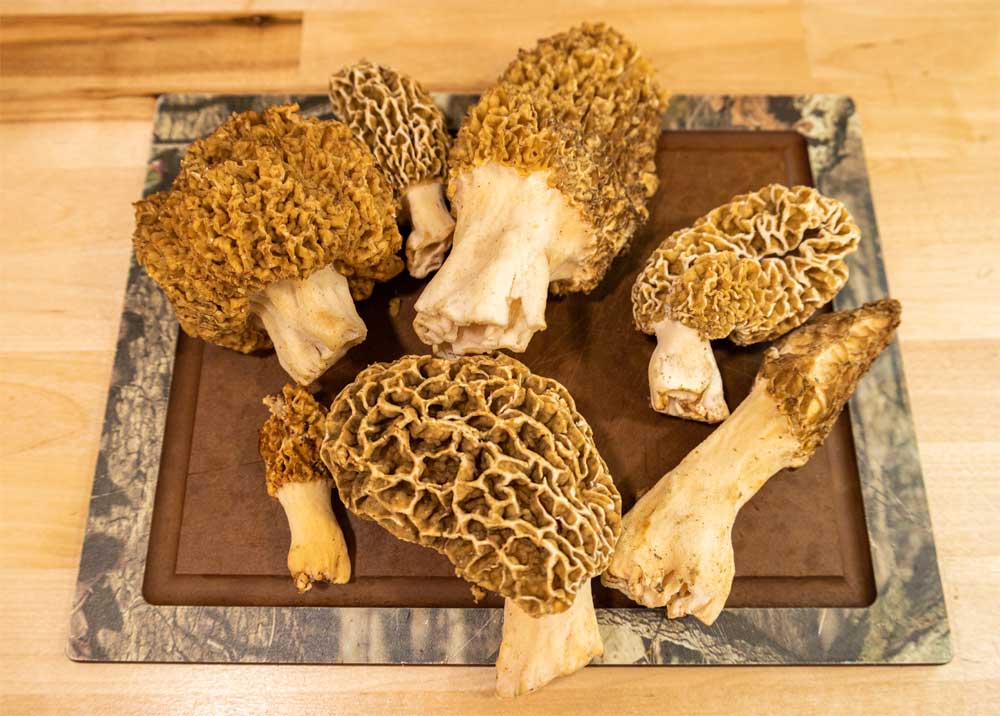
Eat Good!
When we return home, there is usually no debate about what to do with the incredible edible mushrooms. My wife will immediately wash them and plan a dinner around the tasty treats. If we do have too many (like that's a real problem — too many morel mushrooms!?) and we can't eat them all in one sitting, we will keep them dry in the refrigerator to eat the next day or share with friends and neighbors. We found so many last spring that we experimented with how to best preserve them for the winter. My favorite way is to slice the mushrooms lengthwise, wash them and dry them in my food dehydrator. They will shrivel up to pretty much nothing and are quite easy to store in a Mason jar with a screw-on plastic lid. I've also vacuum-sealed them fresh as well as dried and I haven't met a morel yet I didn't like! Like I said, it's not often that we have too many, but when we are blessed with a bountiful pick, I do like to save some for winter.
So get out with your family this spring and find some mushrooms. You don’t have to be an expert to find wild mushrooms. You just have to be willing. For many families, finding morel mushrooms from early to late April is as exciting as their annual Easter egg hunt. For my family, the incredible edible mushroom is much tastier table fare. Make the time to get out this year and try them yourself. You will be glad you did.

